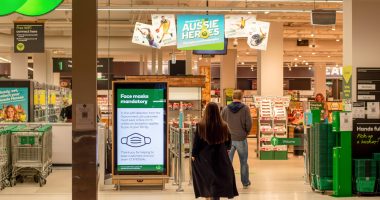- The critical undersupply of rental properties is partly the result of lending restrictions that came into force four years ago, according to the Property Investment Professionals of Australia (PIPA)
- The residential rental vacancy rate rose to 2.1 per cent over the month of March 2021 from 2.0 per cent in February, according to SQM Research
- PIPA Chairman Peter Koulizos said the restrictions on investment lending that began in March 2017 saw a drastic reduction in investor activity, which slashed the usual supply of rental stock being added to the market
- In March 2017, The Australian Prudential Regulation Authority clamped down on interest-only loans in a bid to cool the then hot property market
- Koulizos said a number of capital cities and regional locations have vacancy rates of less than one per cent at present
The critical undersupply of rental properties is partly the result of lending restrictions that came into force four years ago, according to the Property Investment Professionals of Australia (PIPA).
The residential rental vacancy rate rose to 2.1 per cent over the month of March 2021 from 2.0 per cent in February, according to SQM Research. This rate isn’t even across the country, Darwin has a vacancy rate of 0.6 per cent, while Melbourne sits at 4.4 per cent.
This lack of supply has helped to push rental prices up across the country.
According to SQM Research, the national asking rent for houses has increased 15.9 per cent over the past year and the asking rent for units has risen by 7.6 per cent over the same period.
A number of smaller capital cities are currently struggling with significant undersupplies of available rental properties, with vacancy rates often at record lows — but PIPA said the pandemic is not totally to blame.
2017 lending restrictions partly at fault: PIPA
PIPA Chairman Peter Koulizos said the restrictions on investment lending that began in March 2017 saw a drastic reduction in investor activity, which slashed the usual supply of rental stock being added to the market.
In March 2017, The Australian Prudential Regulation Authority clamped down on interest-only loans in a bid to cool the then hot property market.
The regulator said at the time that interest-only loans must be restricted to 30 per cent of new residential mortgage loans.
Property investor activity reached a 20-year low in May last year, according to the Australian Bureau of Statistics, before ramping up in the months following.
In March 2017, investor new home loan commitments was at 8.869.
“Investor activity dropped about 50 per cent from March 2017 to May 2020 because of the lending restrictions that were applied carte blanche to investors around the nation four years ago,” Koulizos said.
“Back then, the restrictions came into effect because of the strong property price growth in Sydney, but investors everywhere were also blocked from securing finance even in markets with benign market conditions at the time, such as Perth, Adelaide and Brisbane,” he added.
Lack of supply pushing prices up
The vacancy rate industry standard for a balanced rental market is three per cent with any percentage below that figure considered to reflect a market with more demand than supply, according to PIPA.
Koulizos said a number of capital cities and regional locations have vacancy rates of less than one per cent at present.
“Vacancy rates in inner-city Sydney and Melbourne have spiked over the past year due to the loss of international students and overseas migrants, but even many suburbs in these cities are also experiencing an undersupply of rental properties,” he said.
Koulizos said the pandemic had added more pressure to the already dwindling rental supply in regional areas in particular due to the increased migration of people into lifestyle areas.
“Demand for rental properties in many regional locations – such as the Sunshine Coast in Queensland, the Central Coast of New South Wales, and the South West of Western Australia – is far outweighing supply with rental prices skyrocketing over the past year,” he said.
“This critical situation is forcing some renters to move further afield because they can no longer afford to live in a region that they have sometimes called home for decades.”
Koulizos said it was imperative that policy-makers don’t make the same mistake again with investor activity still well below what is needed to improve the supply of rental properties around the nation.
“Unfortunately, the critical undersupply of rental properties is not a situation that will change overnight — just like it wasn’t a situation that happened over a short period of time either,” he said.
“It is the industry’s belief that market cycles need to be allowed to run their course without any type of outside intervention because they will always move through their peaks and troughs of their own accord.
“Instigating policies to solve a supposed short-term problem can have long-term ramifications, which is the drastic situation that tens of thousands of tenants are now experiencing,” he concluded.







